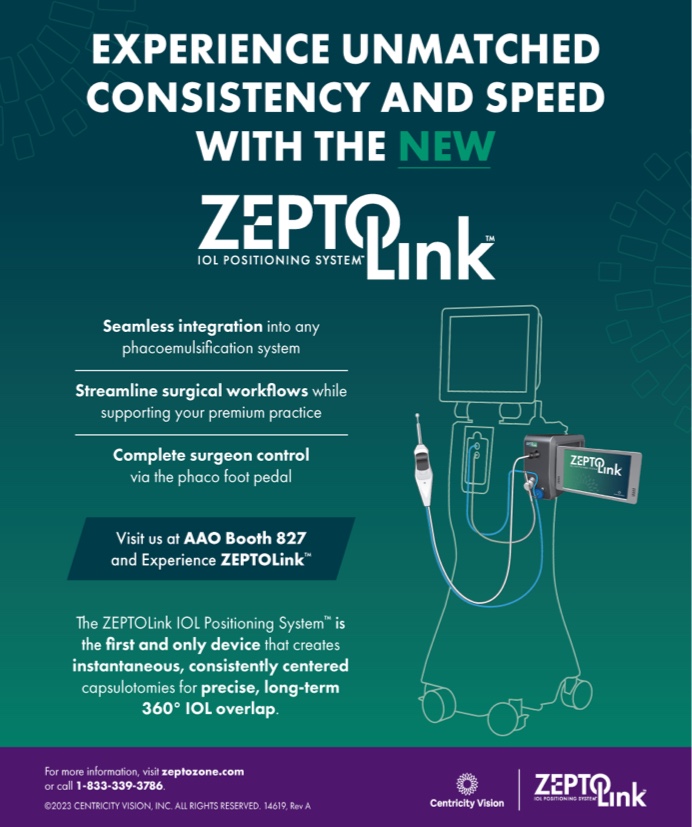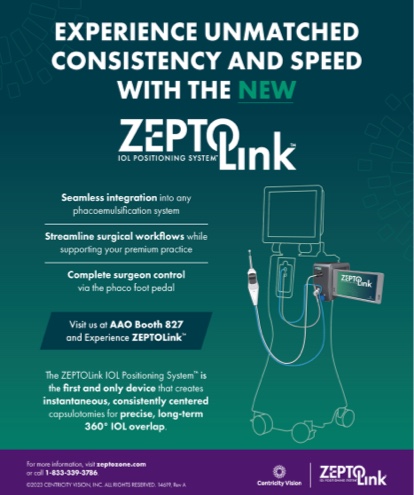This installment of “Inside Eyetube.net” features videos that introduce new surgical devices to enhance cataract surgery. Three surgical devices featured on Eyetube.net that stand out are a hydrodissection cannula, a pupillary dilation device for small pupils, and a second-hand instrument to improve surgical technique during laser cataract surgery. Each of the videos provides clear, concise directions for how to use the instruments.
MACKOOL HYDRODISSECTION CANNULA
The Mackool Hydrodissection Cannula features a 23-gauge, flattened design (Sterimedix Ltd.). Slight depression of the syringe's plunger creates a wide fluid wave, which promotes efficient hydrodissection with reduced hydraulic pressure and thus increases safety. Localized areas of greatly elevated intracapsular pressure are thus avoided, which otherwise could increase the risk of posterior capsular rupture.
After completing the capsulorhexis, Richard Mackool, MD, inserts the cannula beneath the anterior capsule, then slightly elevates the instrument against the capsule (Figure 1). Next, he gently applies pressure to the plunger of the syringe to which the cannula is attached. As the video shows, an immediate, broad fluid wave becomes visible beneath the nucleus. If the nucleus moves forward, it is gently depressed with the cannula. Dr. Mackool then performs the identical procedure at a location directly opposite the site of the first injection. He performs viscodissection by injecting Viscoat (Alcon Laboratories, Inc.) beneath the anterior capsule for 180º opposite the phaco incision.
OASIS IRIS EXPANDER
In his video, D. Michael Colvard, MD, demonstrates how to use the Oasis Iris Expander (Oasis Medical, Inc.). The molded, single-piece polypropylene device expands to a 7-mm rectangular shape after insertion and maintains access and visibility throughout the cataract surgical procedure. The disposable device is indicated in cases in which miosis and/or intraoperative floppy iris syndrome are factors. The major difference between the Oasis Iris Expander and other expanding devices is that the former has pockets at each corner that support the iris at two contact points. Dr. Colvard inserts the expander into the anterior chamber with an injector. Next, he uses a Sinskey hook or similarly styled instrument to engage the iris with the four corner pockets (Figure 2). After cataract surgery, the iris expander can easily be removed with a Lester hook.
CORTEX CLUB FOR LASER CATARACT SURGERY
After a surgeon uses a femtosecond laser to make the capsulotomy and fragment the lens, the anterior cortex may be so well cleaved that purchasing cortex with the I/A tip is challenging later in the case. To facilitate this step of the surgery, Peter J. Cornell, MD, demonstrates the use of a new cortex club by Epsilon USA. He uses the instrument to scrub the cortex after the laser portion of the procedure and to create a cleavage plane between the anterior capsule and the anterior cortex (Figure 3). The cleavage plane facilitates hydrodissection and the removal of cortical material at the end of the case with I/A by creating leaflets in the anterior cortex that otherwise would have been sharply cut. Dr. Cornell passes the cortex club through the eye three times, twice through the primary incision and once through the secondary incision, to get a 360º cleavage plane. This step, Dr. Cornell says, makes the rest of the case easier and faster.
CONCLUSION
These three videos highlight new technologies that enhance cataract surgery. All three devices are worth surgeons' review on Eyetube.net and incorporation into their current techniques for the cataract procedure.
Section Editor Elena Albé, MD, is a consultant in the Department of Ophthalmology, Cornea Service, Istituto Clinico Humanitas Ophthalmology Clinic, Milan, Italy.
Section Editor Mark Kontos, MD, is the senior partner at Empire Eye Physicians in Spokane, Washington.
Section Editor Damien F. Goldberg, MD, is in private practice at Wolstan & Goldberg Eye Associates in Torrance, California. He acknowledged no financial interest in the products or companies mentioned herein. Dr. Goldberg may be reached at (310) 543-2611; goldbed@hotmail.com.


